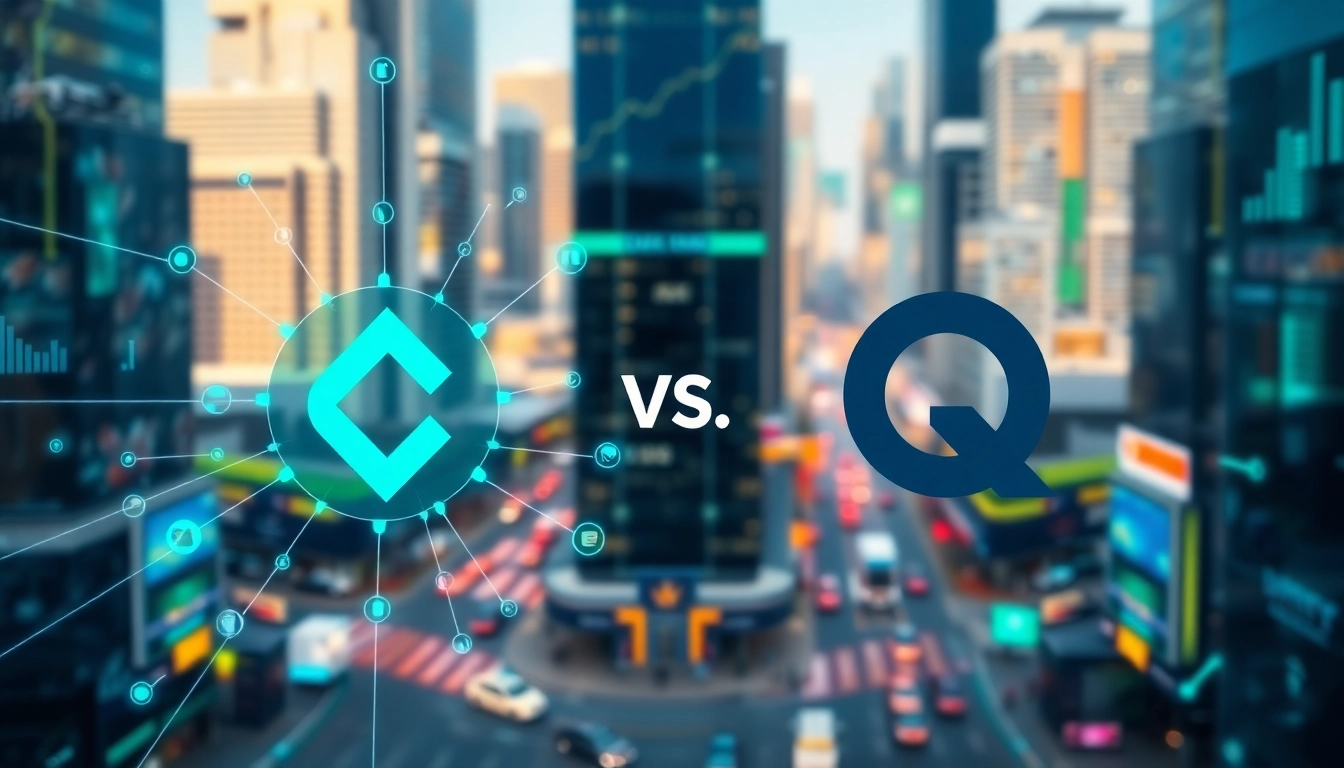Understanding Chainlink vs Quant
In the rapidly evolving landscape of blockchain technology, two projects stand out due to their unique functionalities and approaches: Chainlink and Quant. While both contribute to the blockchain ecosystem, they serve distinctly different purposes. This comparative analysis aims to dive deep into the features, functionalities, and market positions of these two platforms. For a thorough understanding, we’ll explore the chainlink vs quant debate across several dimensions.
Key Features of Chainlink
Chainlink is a decentralized oracle network that enables smart contracts on various blockchains to securely interact with real-world data. Here are some of its standout features:
- Decentralized Oracles: It acts as a bridge allowing smart contracts to access off-chain data. This makes it integral for applications that require external information, such as price feeds or election results.
- Strong Security Model: Chainlink has a robust consensus mechanism that helps prevent malicious actors from disrupting data feeds, ensuring that smart contracts receive accurate data.
- Flexible Configuration: Users can customize which oracles to use and even the terms under which they participate, providing adaptability for end-users.
- Wide Ecosystem Integration: It connects with multiple blockchains and protocols, making it a versatile choice for developers.
Key Features of Quant
Quant aims to enable different blockchains to communicate with each other seamlessly, thereby creating an interconnected blockchain environment. Its primary features include:
- Interoperability: Quant’s Overledger technology permits connection to various blockchains, allowing for smooth user experience across platforms.
- Universal Applications: Developers can build decentralized applications that can operate across multiple blockchains, broadening their reach and capabilities.
- Scalable Architecture: Its design supports a range of transaction volumes and speeds, making it suitable for enterprises.
- Tokenization of Assets: Quant allows users to create tokens representing real-world assets on its platform, enhancing compliance and security.
Differences in Functionality
The fundamental differences between Chainlink and Quant manifest in their core functionalities:
- Purpose: Chainlink’s primary role is to provide real-world data to smart contracts, acting as a data conduit. In contrast, Quant focuses on blockchain interoperability, creating a bridge between various blockchain networks.
- Operational Scope: Chainlink generally addresses decentralized finance (DeFi) use cases requiring external data feeds, while Quant aims at enterprises needing to operate across multiple blockchain platforms.
- Technology Stack: Chainlink utilizes a network of decentralized oracles for data aggregation, while Quant employs its patented Overledger technology to facilitate communication between chains.
Market Position and Value Analysis
Current Market Trends for Chainlink vs Quant
As of now, Chainlink commands a significant presence in the DeFi space, largely due to its established partnerships and widespread adoption. In contrast, Quant is gaining traction as businesses begin to realize the importance of cross-chain functionality.
Price Comparisons and Volatility
Both tokens have demonstrated price fluctuations influenced by market sentiment, technological advancements, and broader cryptocurrency trends. Chainlink’s price has historically been more volatile, directly linked to the growth of DeFi projects. On the other hand, Quant, while still experiencing volatility, is often viewed as more stable due to its enterprise focus.
These variances in price and stability influence investor sentiment and decisions within the blockchain ecosystem.
Future Market Predictions
Analysts predict that Chainlink will continue to thrive in the DeFi sector as more decentralized applications arise. Conversely, Quant is positioned to become essential for enterprises adopting blockchain solutions as the need for interoperability rises. By analyzing these potential growth areas, investors can better position themselves for upcoming shifts in the market.
Use Cases and Applications
Chainlink’s Role in Smart Contracts
Chainlink acts as a critical component for smart contracts across various platforms by integrating with DeFi applications. It helps these contracts access essential data such as market prices, ensuring automated operations without the reliance on centralized data sources. A practical example includes automated trading strategies reliant on real-time price feeds.
Quant’s Interoperability Solutions
Quant enhances the functionality of decentralized applications with its interoperability solutions. Its Overledger technology enables communication between different blockchains, ensuring that applications can utilize the best features from multiple platforms. Industries such as finance and supply chain management can particularly benefit from this technology, allowing for efficient transactions that span different blockchain networks.
Real-world Implementations
Adoption of Chainlink’s oracles is evident in various sectors, including finance and insurance, where accuracy in data feeds is paramount. In contrast, Quant’s enterprise focus is driving partnerships across industries, allowing businesses to develop cross-chain applications that improve operational efficiencies and reduce friction.
Challenges and Limitations
Scalability Issues for Chainlink and Quant
Both Chainlink and Quant face scalability challenges. Chainlink’s reliance on decentralized oracles can sometimes lead to bottlenecks during peak transaction loads, impacting performance. Meanwhile, Quant’s interoperability can become complex when dealing with multiple blockchain protocols, which may challenge its overall scalability.
Regulatory Challenges
As blockchain technology continues to permeate various sectors, regulatory scrutiny is likely to grow. For Chainlink, this may manifest in data privacy regulations, whereas Quant could face challenges regarding compliance across jurisdictions when facilitating cross-border transactions.
Technological Barriers
Both projects must evolve technologically to stay relevant. Chainlink’s continued success heavily relies on maintaining the integrity and security of its oracle solutions. Quant, on the other hand, needs to innovate its Overledger technology to sustain performance despite increasing complexity in the blockchain landscape.
Conclusion: Evaluating Your Investment Options
Assessing the Potential of Chainlink vs Quant
Both Chainlink and Quant present unique avenues for investment, catering to different aspects of blockchain technology. Evaluating their respective markets and functionalities can provide investors with an informed foundation for capital allocation decisions.
Investment Strategies for Blockchain Technologies
Investors should consider diversifying their portfolios across both Chainlink and Quant. Chainlink’s established presence amid the growing DeFi sector can provide stability, while Quant’s focus on interoperability offers significant growth potential as enterprises increasingly embrace blockchain technology.
Final Thoughts on Blockchain Investments
In the end, navigating the blockchain market requires discernment and understanding. Both Chainlink and Quant are valuable assets within their niches, and understanding their differences and strengths is vital for making educated investment decisions. Holding both tokens might provide a balance of growth and stability as the landscape evolves.



